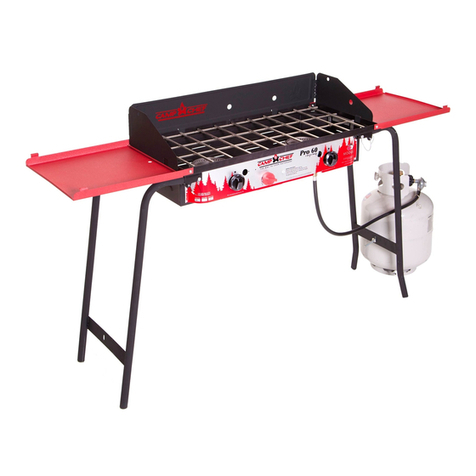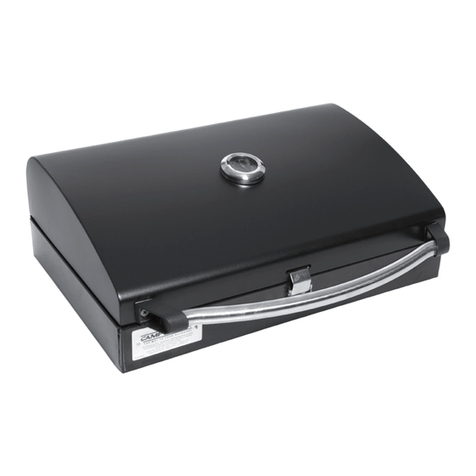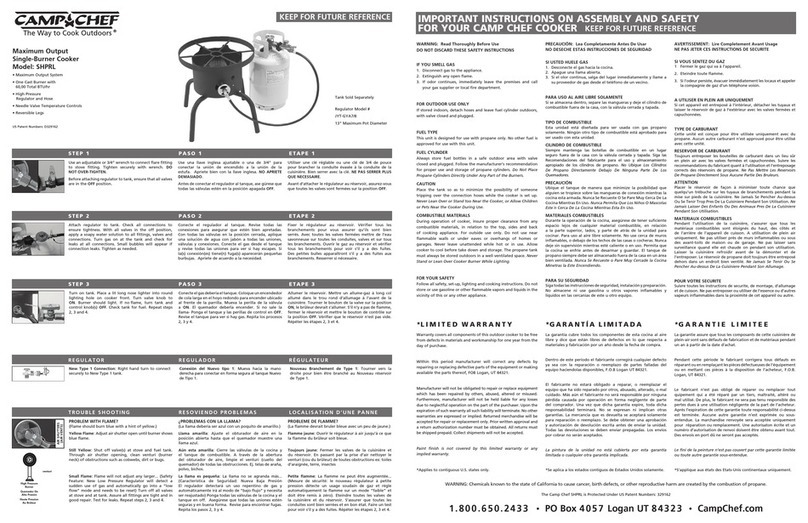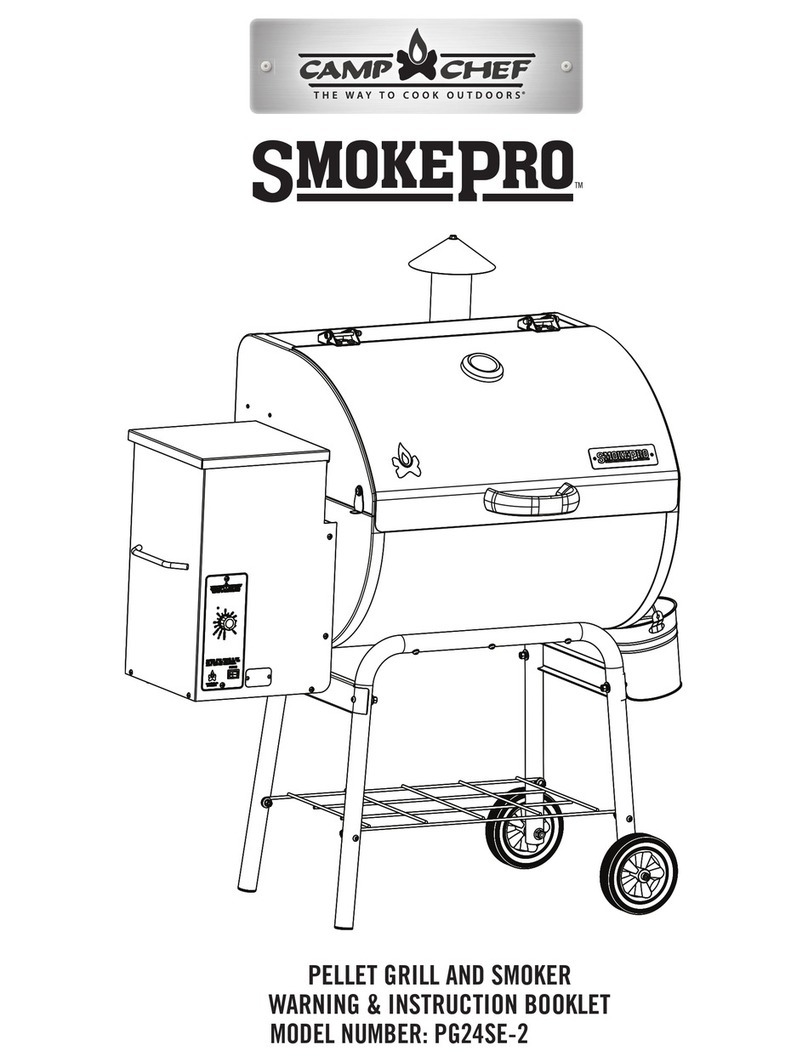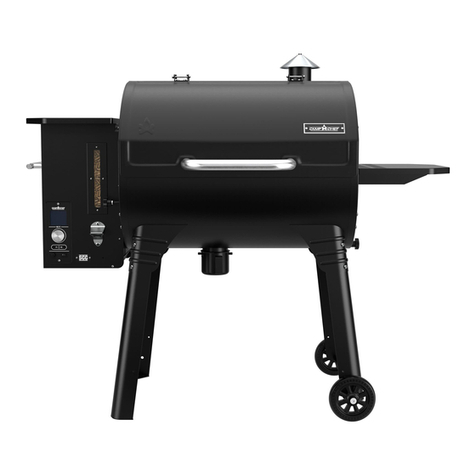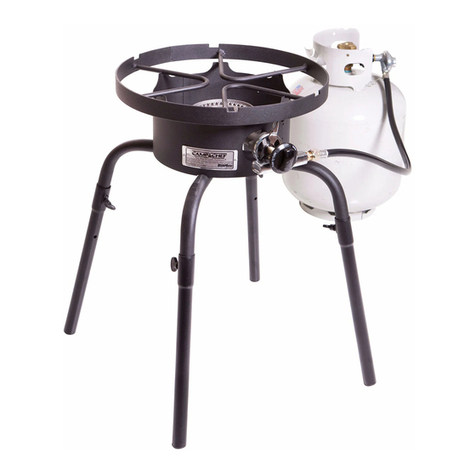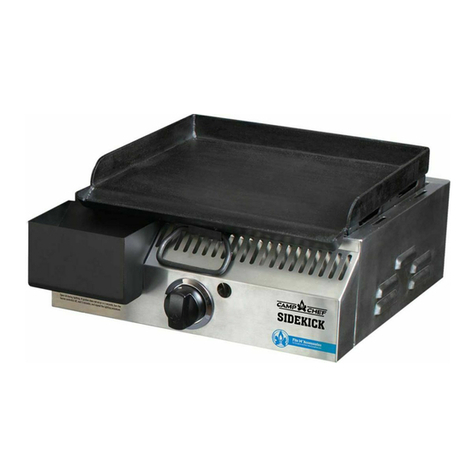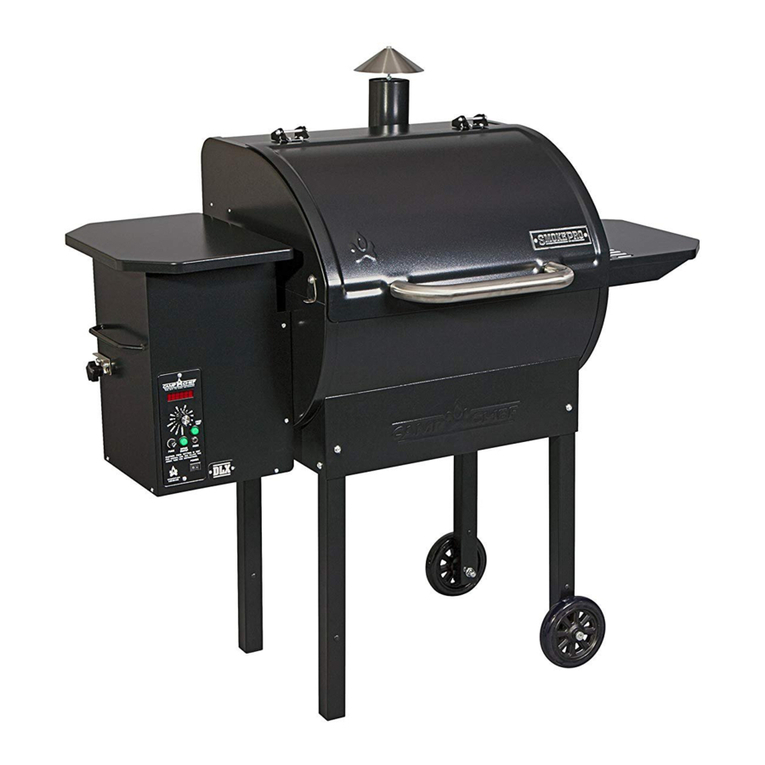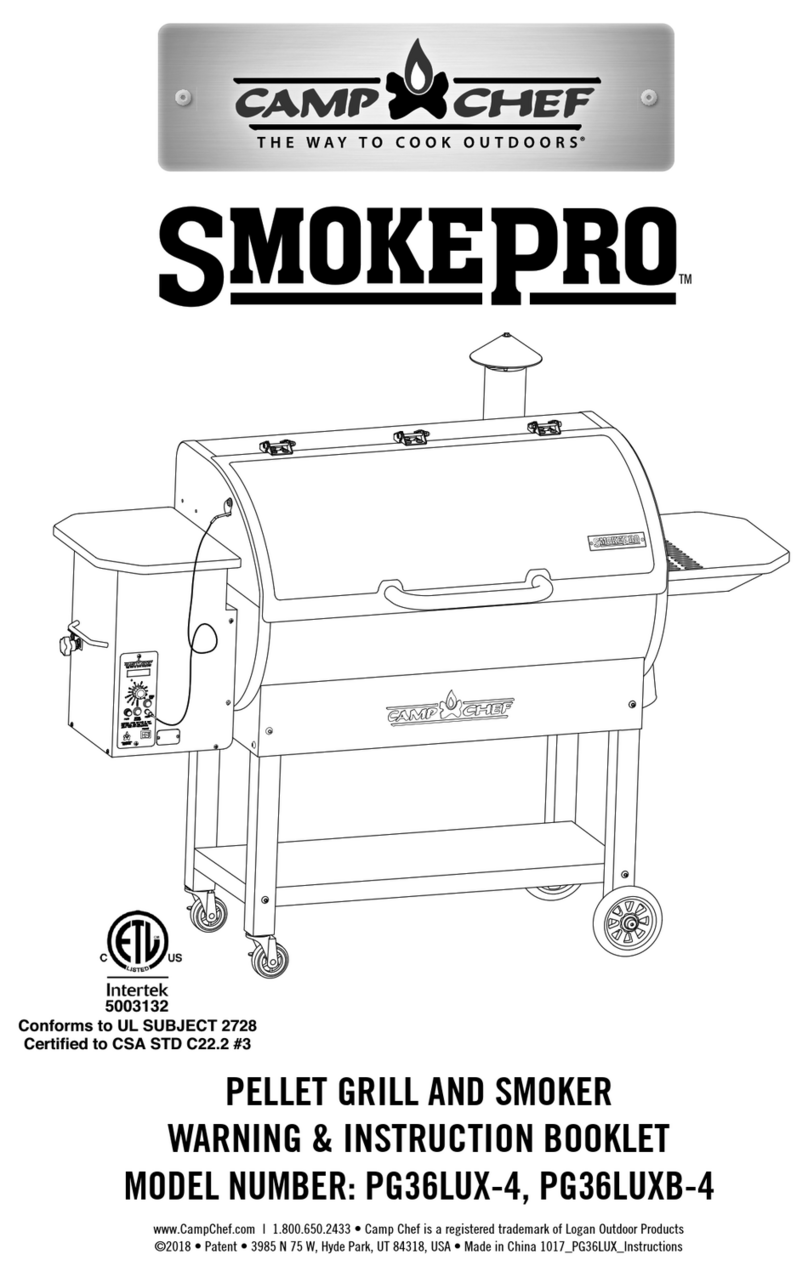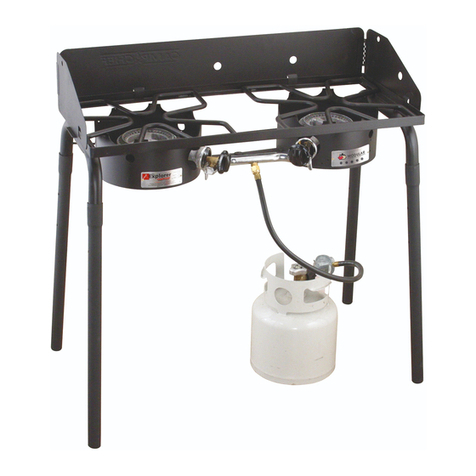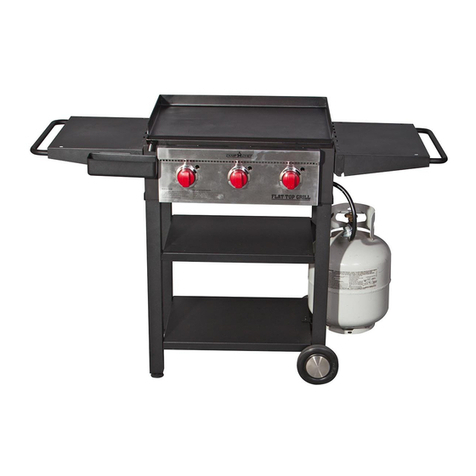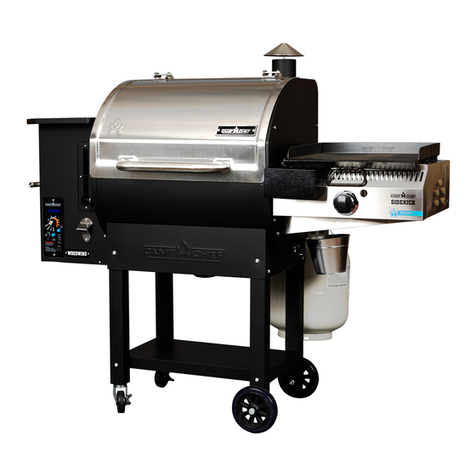
16 17
PELLET GRILL MAINTENANCE
If you’ve got yourself a pellet grill, you’re probably enjoying a steady stream of incredible food, whether it’s
fresh-baked pizza or smoked brisket. But with each cookout, your pellet grill collects a little more grease and
ash. To keep your grill at its best, ready to cook all your favorite foods, follow our cleaning guide below.
BETWEEN EACH COOK:
For quick cleanup between cookouts, you don’t
need to do anything too dramatic. In fact, our
patented Ash Clean-out system makes it as simple
as pulling a knob. Before you fire up the pellet grill
each time, just empty the ash into the cup, and
you’re good to go. It’s almost too easy.
Disposing of ash:
If the ash is completely cool, it can be wrapped up
in aluminum foil and tossed in the garbage.
Never dispose of hot ashes. Allow them to cool
before proper disposal.
Don’t forget about the internal temperature
probe. You’ll want to clean it between each cook.
It’s located in the left hand side of the cooking
chamber, and is about the size of a pencil. Our goal
is to keep it looking silver. To do this mix a vinegar/
water solution and use a scouring pad. Often times
if your temperature does not read accurately it’s
because the temperature probe is not clean.
Besides emptying the burn cup, you may want to
spot clean between cook sessions as well. This
can be as simple as wiping away grease spots or
food residue on the door or side shelf. You should
also scrape down the pellet grill grates with a wire
grill brush or spatula before you start cooking to
avoid a burnt taste on your food.
Pull out the grease tray and ensure the grease tray
is free from grease buildup. To avoid flare-ups in
the pellet grill, use a spatula to remove any grease
from tray. Ensure the drain hole and grease drain
are not blocked.
Tip: Scrape your grates with a wire brush after
every cook while the grates are still warm.
Don’t burn yourself if your pellet grill is still hot.
Cleaning meat probes:
Clean your probes after each use. Use warm
soapy water and a cloth or paper towel. Do not
submerge wire in water. Not dishwasher safe.
If you take these small steps toward keeping your
pellet grill clean, any deeper cleaning you do will
be much easier.
AFTER 50 HOURS OF COOKING:
You should give your pellet grill a deep clean
roughly every 50 hours of cooking. If you don’t
cook on your pellet grill very often (you should fix
that), you may only need to deep clean your pellet
grill once every several months. Be sure to clean
the internal temperature probe and dump the ash
cup like in the step previous. If you’re a pellet head
like we are, you’ll find yourself doing this routine
more often. Luckily, it’s quite simple.
Cleaning the exterior:
Safety first! Make sure your pellet grill is totally
cool, then unplug it from its power source.
Empty the pellet hopper to prevent your pellets
from getting wet or coming into contact with
cleaning substances.
Spray stainless steel cleaner on the painted
surfaces of your pellet grill. Avoid spraying any
plastic components. (You can also use hot, soapy
water-it just may not work as quickly!)
Do not use oven cleaner, abrasive cleaners, or
abrasive cleaning pads on the exterior surfaces of
your pellet grill.
Let the cleaner sit for about 30 seconds to give it
a chance to break down grease and smoke stains.
Wipe off the cleaner with a clean paper towel or
rag. Wipe in circles on all painted surfaces. Repeat
the process once more to clean off any remaining
grease or smoke. With a rag, rinse thoroughly if
you used soapy water.
Cleaning the interior:
Safety first! Make sure your pellet grill is totally
cool, then unplug it from its power source.
Empty the pellet hopper to prevent your pellets
from getting wet or coming into contact with
cleaning substances.
Pull the Ash Clean-out knob and empty the ash
from the burn cup.
Open the door and remove the cooking grates,
any extra racks, drip tray, and heat diffuser plate
from inside the pellet grill. Pay attention to how
these pieces are installed (or even take a picture)
so you’ll have an easier time reassembling your
pellet grill.
Use a wet/dry vacuum with a hose attachment to
remove loose ash and debris.
Remove creosote buildup from updraft walls.
Look for places inside your pellet grill where
grease has built up. Use something with a flat
edge (a paint stick, pan scraper, etc.) to dislodge
and remove it.
Use hot, soapy water and a rag to wash the
interior of your pellet grill, as well as each piece
you pulled out.
Repeat the process until most of the grease
buildup is gone.
With a rag, rinse thoroughly if you used soapy
water and allow everything to dry.
NEVER cover slots, holes, or passages in the
pellet grill bottom or cover an entire rack with
material such as aluminum foil. Doing so blocks
air flow through the pellet grill and may cause
carbon monoxide poisoning. Aluminum foil
linings may trap heat causing a fire hazard.
Allow to dry for at least 24 hours before cooking,
and double-check that the hopper has no water in
it before reloading pellets.
Cleaning the exhaust vents:
When wood pellets are burned slowly, they
produce tar and other organic vapors that
combine with expelled moisture to form creosote.
The creosote vapors condense on cooler areas
of your pellet grill, like your exhaust vents. When
ignited, creosote can produce an extremely hot
fire and damage property or the exterior finish of
your pellet grill. Creosote and grease should be
removed to reduce the risk of fire.
Remove the bolts on either side of the vents on
the back of your pellet grill. From the inside of
your pellet grill, remove the vent cover that is now
loose. Remove any grease or creosote buildup
and replace the cover.
Dedicating a bit of time to cleaning out your pellet
grill, both between cooks and a couple of times
a year, will keep the good food coming for years.
When you love your grillfriend, it will love you back.
Pellet storage:
Store pellets indoors in a dry space away from
humidity, moisture fluctuation, and heat producing
appliances. If your pellet grill ever isn’t running
properly, pellets are the first thing to check.


